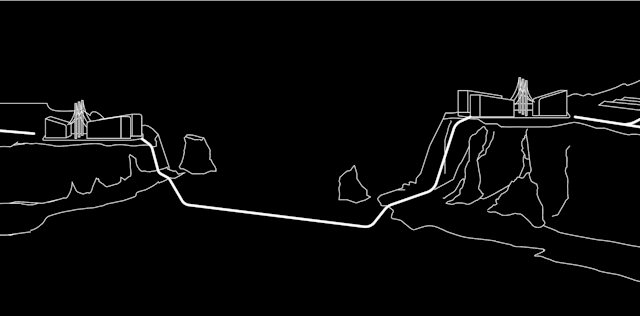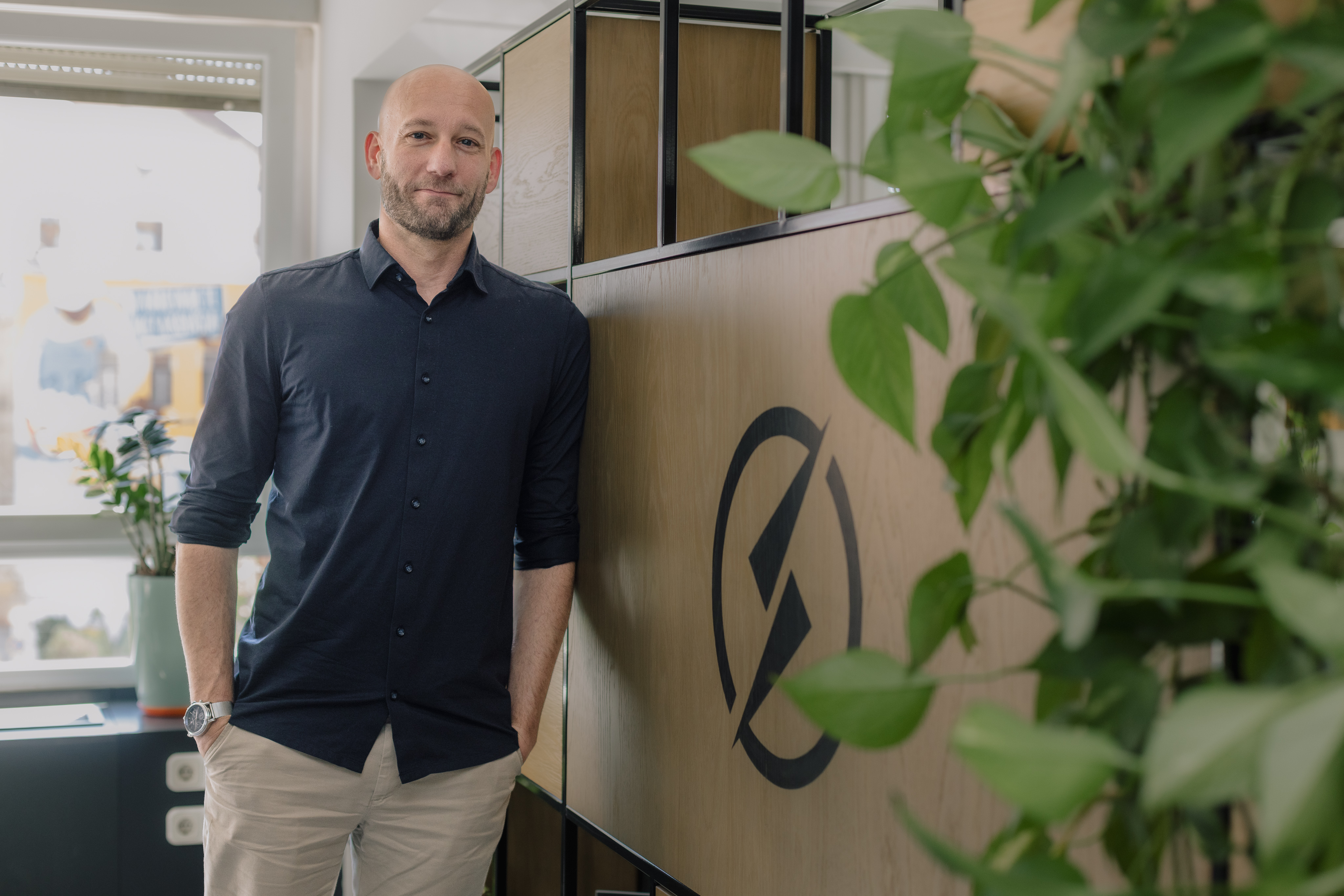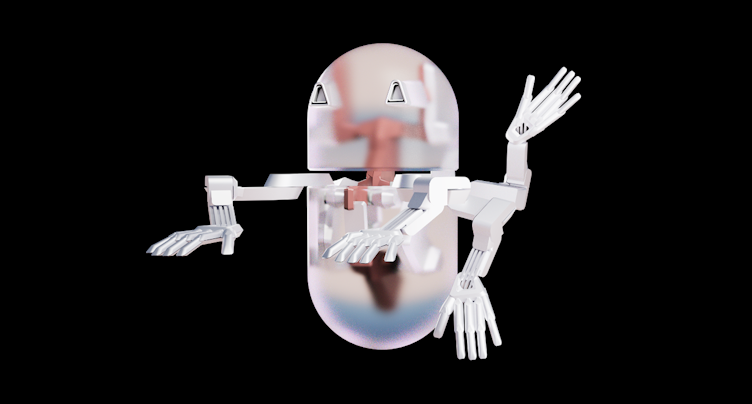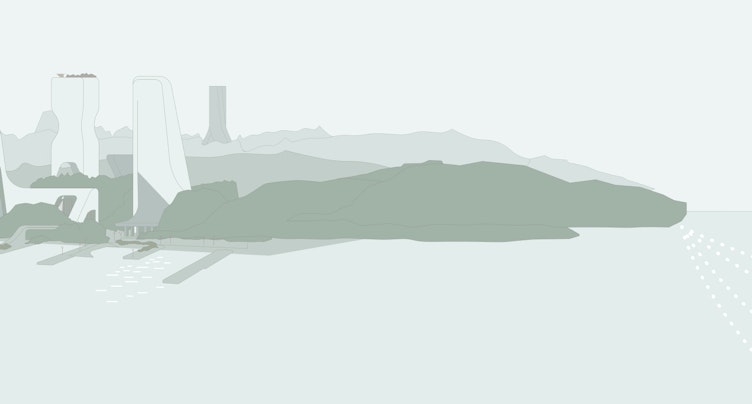share this post on


11 September, 2025
As energy markets face rapid transformation driven by electrification, digitalisation, and the urgency of the energy transition, we’re launching a dedicated energy business line to help industry leaders navigate this change. At the heart of this move is Nils Teipel, our new Energy Director.

Nils brings over 15 years of experience across European energy markets, having held leadership roles in transmission system operations, interconnector projects, and large-scale innovation initiatives. His expertise spans designing and delivering future-ready platforms, enabling digital transformation, and driving operational excellence in highly regulated environments.
For Supercharge, harnessing technology to drive meaningful change has always been central to our approach. With a track record of supporting large-scale energy projects across Europe with our digital expertise, this new business line feels like a natural way to build on that work and continue to deepen our impact.
We sat down with Nils to ask him about the challenges shaping today’s energy landscape, why now is the right moment for Supercharge to step in, and how we aim to create a lasting impact together with our partners.
1. You’ve spent much of your career in the energy sector. What first drew you to this field, and what ultimately led you to join Supercharge as our first Energy Director?
My interest in the energy sector, especially electricity, first sparked during my business economics studies. As part of a research project, I explored the optimal locations for offshore wind farms—which were still relatively new at the time—and compared their profitability and generation efficiency with onshore alternatives. The deeper I went into the research, the more I realised that behind something as simple as flipping a light switch lies an entire world of asset supply chains and international markets. What fascinated me most was seeing electricity not just as a utility, but as a commodity, and uncovering the wide range of players and functions involved in getting it all the way to our power sockets as end consumers.
A few years later, after holding leadership roles across TSOs and interconnectors such as TenneT and BritNed, I’m joining Supercharge as the new Energy Director. I’m excited to bring together my operational experience with Supercharge’s digital expertise to deliver smart solutions that help accelerate the energy transition.
2. Looking back, which projects or experiences most shaped your perspective on how innovation in the energy sector should be approached?
During my time at BritNed, I was involved in numerous projects that encouraged me to think in innovative and entrepreneurial ways about optimised asset operations, market utilisation, and customer approaches. One project that really stands out was the first implementation of an implicit cross-border market coupling between the Netherlands and Great Britain—well before the first regulatory-driven market coupling was introduced in GB.
This experience showed me that combining physical assets with smart IT solutions can unlock new markets and trading opportunities. It made me realise that the energy sector can achieve far more than the current status quo. Although the industry has made progress in spotting these opportunities, it still falls short of the efficiency and optimisation seen in other markets like for example, the stock market.
3. What excites you most about joining Supercharge at this stage of the energy transition?
We are at a crucial stage of the energy transition. Globally, attention is being diverted to other topics, and there’s growing public opposition to green energy initiatives because of costs. Even within asset-heavy organisations, it’s becoming clear that simply building more offshore generation and additional onshore grid connections won’t solve the problem. While these measures are necessary and can help in some areas, they are expensive and won’t fully address the challenges, especially as global energy consumption continues to grow.
In my view, the energy transition will only succeed if we rethink how we operate networks and assets, leverage new IT setups and AI capabilities for better forecasting and more efficient operations, and reduce the number of different energy sources used in parallel. This is the only way to make the most of existing infrastructure and lower overall costs.
Considering all this, I feel like I’m joining Supercharge at exactly the right time. One of Supercharge’s mottos is, “we build futures, not just tech,” and I love the idea that, together, we can contribute to building all of our future by creating smart solutions that support the energy transition efforts of TSOs, DSOs, asset operators, trading companies, and interconnectors.
4. From your perspective, what are the most significant trends and operational challenges currently shaping the energy sector?
One of the biggest operational challenges remains running electricity networks efficiently, especially with a large share of renewable generation and networks that weren’t designed to transport power over such long distances. This creates congestion management issues and a whole range of related challenges. These include accurate forecasting, efficient operation of generation assets, smart balancing approaches, transparent market operations with strong price signals, fast response times, and more.
As a result, we’re seeing clear trends emerging: increased use of AI and forecast-based algorithmic trading, growth of providers in this space, smarter, demand-driven asset operations, and a stronger focus on cybersecurity, particularly given the current geopolitical events.
5. Energy is often seen as a conservative industry, yet we’re witnessing rapid change. What do you see as the main drivers pushing companies to innovate, and what are their obstacles?
The primary drivers are the ones I mentioned earlier: we need smarter solutions and better use of AI and IT, combined with out-of-the-box thinking, to achieve our ambitious climate targets and advance the energy transition. I see technology as central to making the energy transition both effective and, potentially, more affordable.
However, this drive for innovation raises a key question for energy companies: how effectively can they leverage and utilise technology? In many cases, the answer depends on organisational factors and whether the company has the right technical capabilities in place or can secure them externally.
6. Choosing the right partner is crucial in the energy sector—small mistakes can affect millions of users. Based on your experience with a leading European TSO and interconnector projects, what should energy leaders look for in a partner to ensure their innovation projects succeed?
The answer is actually in the question itself. It’s about finding a true partner, not just a supplier. Success depends on both sides being committed to shared outcomes. Projects become much easier to deliver when you have passionate, skilled, and dedicated people genuinely motivated to solve problems together. It sounds simple, but it can be challenging—especially when collaborating across sectors with different KPIs.
On the technology side, it’s essential to work with suppliers offering customisable, state-of-the-art solutions who stay up to date with the latest innovations. With increasing pace, data volumes, and security demands in the energy sector, this has never been more important.
7. You previously collaborated with Supercharge on BritNed’s interconnector platform. Based on that experience, what stood out to you about Supercharge’s approach and capabilities?
It’s exactly what I mentioned earlier: the Supercharge team genuinely cared, were eager to learn, and committed to delivering the right solution, not just a solution. I saw this motivation across the delivery team: project managers anticipating and tackling issues ahead of time, software and architecture teams using top-tier solutions even if it affected internal margins, and operations teams striving for the best possible support.
Seeing what such a competent, skilled, and dedicated team can achieve makes me confident in representing Supercharge as Energy Director. When technical expertise and commitment come together, the results speak for themselves.
8. As the new Energy Business Unit Director, how do you see Supercharge supporting partners in their most pressing challenges? Could you share which segments, typical use cases, and business outcomes you’ll be focusing on, and how our services and processes will enable impact?
There are several areas where we can add real value with our expertise and approach. This includes developing allocation and nomination handling systems for interconnectors and system operators, as well as creating dispatch systems that manage the power output of transmission assets and generation units in the most cost-effective manner. I’ve successfully led multiple implementations of such projects with various suppliers, and I believe we are well-positioned to combine operational and technical expertise with next-generation solutions.
In addition, we will offer specialised market solutions for trading and short-term portfolio optimisation for trading houses and generators. These solutions are particularly interesting because they can leverage our AI expertise, as well as our partnership with NVIDIA and our data team capabilities, to deliver immediate, tangible commercial results for our clients.

9. At the heart of many of Supercharge’s platforms lies a robust, modular solution core. Why is such a foundation critical for the energy sector?
Energy, and electricity in particular, has become essential to our society. Modern electricity systems are designed to minimise downtime and include extensive redundancy, such as n-1 security for networks. Since all assets now rely on IT systems, we need to apply the same level of reliability to the technology that supports them.
Our focus is on helping clients maintain continuous availability. This means using smart monitoring, highly redundant setups, and self-healing IT components wherever possible. At Supercharge, we build systems like the Empire platform and the Helix Allocation and Nomination systems, utilising multi-zone cloud setups, rapid failovers, advanced cybersecurity monitoring, and eliminating single points of failure.
We also put a great deal of thought into minimising human error. Critical user interfaces include double-check prompts and user-role-specific access management to make sure operations are safe and accurate.
10. Large-scale system transitions often come with tight deadlines and high stakes. From your experience, what drives a successful launch under those conditions?
The answer might not sound very exciting, but a seamless system launch is really the result of weeks of detailed planning, testing, and checklists, combined with a committed team that understands the system inside out and has been involved end-to-end in its development. At Supercharge, we provide this kind of team on the supplier side for every system we develop.
Before go-live, our project managers and QA team make sure all planning and testing is completed and that every team member is thoroughly briefed. After launch, we follow a hypercare approach, with both operations and development teams staying fully involved for several weeks to handle any troubleshooting that comes up. This approach has proven very effective and has helped clients like BritNed and Eleclink achieve smooth, successful system transitions and launches.
11. Innovation doesn’t end at launch. Why is long-term, 24/7 support just as important as the initial build?
A common challenge in the energy B2B sector is that IT system suppliers often show little interest in operating the platforms they build, or they offer only very limited support. At the same time, clients usually don’t have large, specially trained 24/7 support teams. Even the best IT platform for business processes won’t deliver value if it’s not properly managed. This can lead to costly process breakdowns, undetected security breaches, frustrated staff, and, ultimately, unhappy customers. That’s why I believe a platform’s true value is only realised through its post-go-live service—this is the only way to ensure it performs optimally.
12. Scalability is vital for ongoing transformation. How should platforms be built to support the rapid roll-out of new products as markets and regulations evolve?
The answer to this question naturally evolves over time as technology develops. At the moment, we focus on building platforms that are cloud-native, which allows easy upscaling when more performance is needed, fast downscaling to save hosting costs, zero-downtime deployments, and always up-to-date cybersecurity functions.
We also design our platforms to be truly modular. Typically, we build a core that holds all raw data, with additional modules around this core that can access the data as needed. No module or process is connected in a way that prevents it from operating independently. This means modules can be modified or updated without affecting other parts of the system or overall stability.
Finally, we’ve started building our systems in an AI-native way, so that all underlying data can be efficiently used by AI functions—even if those functions are added later.
13. Looking ahead, what milestones do you hope to achieve with Supercharge’s new energy business unit - both in the short term and over the next few years?
On one hand, we’ll continue to focus on our existing core competencies, serving as a reliable, constructive, and innovative partner for both existing and new System Operator clients. This includes capacity allocation and nomination processes, dispatch operations, and business intelligence derived from data. In this area, our goal is to extend our portfolio and strengthen existing partnerships.
On the other hand, we’re exploring a few exciting new concepts. These focus on commercial optimisation of asset usage, asset maintenance, and power trading by combining proven data modelling setups with new AI capabilities. I’m particularly keen to initiate new collaborations in the energy trading space, bringing these innovations to life and generating tangible value for our clients.
Want to accelerate your energy project or system optimisation with confidence? Speak with Nils Teipel to explore how our expertise in technology and partnerships can drive real impact.
Let's talk about your plans!
The form is loading...


